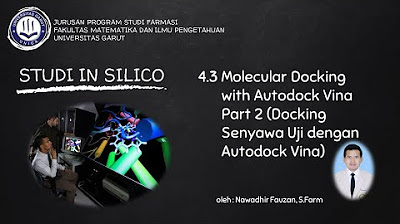Dry Docking
Summary
TLDRThis animated film provides a comprehensive overview of the ship dry docking process, highlighting its importance for vessel maintenance and safety. It outlines the regulatory requirements, types of dry docks, and the meticulous preparations needed before docking. Key stages include inspections by surveyors, hull cleaning, and machinery checks, ensuring the ship's structural integrity. The film emphasizes the collaborative efforts of the ship's superintendent, engineers, and dockyard staff in executing the dry docking operations efficiently. By detailing each step, it underscores the critical nature of these procedures in maintaining a vessel's seaworthiness and operational performance.
Takeaways
- 🚢 Ships require periodic inspections of their underwater hull and machinery, following SOLAS regulations.
- 📅 A major class inspection must be conducted every five years, with intermediate surveys every 2.5 years.
- 🛠️ There are five types of dry docks: graving, floating, synchro lift, slipway, and cradle lift, with graving and floating being the most common.
- ⚓ Graving docks are concrete basins where ships are placed on blocks after water is removed, while floating docks can submerge beneath ships for repairs.
- 👥 Preparation for dry docking is critical and involves collaboration among the superintendent, chief engineer, and crew to create a repair plan.
- 📋 Before entering dry dock, the ship must have all necessary documentation, including inspection plans and technical drawings.
- 🔍 A visual inspection of the ship's hull and machinery is conducted by the class surveyor and shipyard staff during dry docking.
- ⚖️ Thickness gauging is performed on anchor chains and other components, with a maximum wear allowance of 12%.
- 🧽 Hull cleaning and anti-fouling paint application are essential for maintaining fuel efficiency and preventing marine growth.
- ✅ After all inspections and repairs, the ship undergoes sea trials to ensure operational performance and seaworthiness before leaving dry dock.
Q & A
What is the primary purpose of dry docking a ship?
-The primary purpose of dry docking a ship is to inspect and maintain its underwater hull and machinery to ensure safety and compliance with maritime regulations.
How often must a ship undergo a main class inspection?
-A ship must undergo a main class inspection every five years, plus or minus three months, as per SOLAS regulations.
What are the two most common types of dry docks?
-The two most common types of dry docks are graving docks and floating docks.
Describe the process of using a graving dock.
-In a graving dock, the vessel is maneuvered onto blocks inside a concrete basin. Once positioned, the dock gates are closed, and water is pumped out to expose the ship's hull.
What preparations are necessary before a ship enters dry dock?
-Preparations include gathering quotes, planning repairs, preparing various survey plans, and submitting necessary documentation, such as shell drawings and thickness measurements.
What inspections are performed once the vessel is in dry dock?
-Inspections include visual assessments of the hull and underwater machinery, thickness gauging of hull and tank structures, and checks on anchor chains and rudders.
What is the significance of thickness gauging during dry docking?
-Thickness gauging is crucial to assess the condition of the hull and components, ensuring that any wear does not exceed the maximum allowed limit of 12 percent.
What maintenance activities are carried out on the propeller and rudder during dry docking?
-The propeller and rudder are removed for internal inspections, and any required repairs are conducted in the engine room, along with maintenance on engines and pumps.
What is done after the dry dock is flooded?
-After the dry dock is flooded, the ship is towed back to anchorage where pressure tests and various load checks are performed to ensure proper engine and machinery performance.
What types of certificates are collected after dry docking?
-After dry docking, certificates collected include the maintenance report, thickness gauging report, classification report, and other relevant documents provided by the shipyard and class surveyor.
Outlines

Dieser Bereich ist nur für Premium-Benutzer verfügbar. Bitte führen Sie ein Upgrade durch, um auf diesen Abschnitt zuzugreifen.
Upgrade durchführenMindmap

Dieser Bereich ist nur für Premium-Benutzer verfügbar. Bitte führen Sie ein Upgrade durch, um auf diesen Abschnitt zuzugreifen.
Upgrade durchführenKeywords

Dieser Bereich ist nur für Premium-Benutzer verfügbar. Bitte führen Sie ein Upgrade durch, um auf diesen Abschnitt zuzugreifen.
Upgrade durchführenHighlights

Dieser Bereich ist nur für Premium-Benutzer verfügbar. Bitte führen Sie ein Upgrade durch, um auf diesen Abschnitt zuzugreifen.
Upgrade durchführenTranscripts

Dieser Bereich ist nur für Premium-Benutzer verfügbar. Bitte führen Sie ein Upgrade durch, um auf diesen Abschnitt zuzugreifen.
Upgrade durchführenWeitere ähnliche Videos ansehen

Main engine : Alarms, Trips, Interlock, Safety device

Stabilitas Melintang, Gaya Kopel Membuat Kapal Kembali Tegak, Righting Lever

4.3. Molecular Docking with Autodock Vina Part 2 (Docking Senyawa Uji dengan Autodock Vina)

ISO Standard Explained | What is ISO | Benefits of getting ISO certified | How to get ISO certified?

FUEL OIL SYSTEM ON BOARD THE SHIP | Toping's World

IRPCS Masterclass Rule 29 Pilot Vessels
5.0 / 5 (0 votes)
